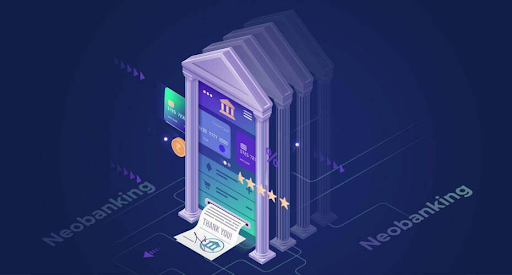In the fast-paced world of banking, neobanks have emerged as a disruptive powerhouse, challenging the conventional banking paradigm with their trailblazing methods. These digital-first institutions are revolutionizing the way customers interact with their finances through cutting-edge mobile applications.
In this article, we will delve into the historical background, statistical insights, pros and cons, and application functionality of neobanks. Additionally, we will showcase some notable applications, provide a comprehensive roadmap for neobank app development, discuss the intricate nuances involved in the development process, touch upon the financial aspects, and culminate with an analysis of the impact neobanks have had on the financial industry.
The Evolution of Neobanks
Neobanks, also known as digital banks or challenger banks, burst onto the scene in the early 2010s. Their growth was propelled by a combination of technological advancements, shifting customer preferences, and the need for more convenient banking solutions. Leading the way was Simple, the pioneering neobank founded in 2009, committed to delivering a transparent banking experience devoid of hidden fees.
Statistics in the Neobank Industry
The neobank industry has witnessed remarkable growth, with projections indicating that the global neobank market will skyrocket to $2168.31 billion by 2030. This surge can be attributed to the increasing number of users embracing digital banking and the expansion of neobanks’ service offerings, ranging from basic transactions to providing loans and investment options.
Upsides and Downsides of Neobanks
Pros
Seamless Convenience: Neobanks offer round-the-clock access to banking services through their mobile applications, empowering customers to manage their finances on the fly.
User-Friendly Experience: Neobank applications prioritize simplicity and ease of use, boasting intuitive interfaces and designs that make financial management a breeze.
Lower Financial Burden: Neobanks often impose lower or no fees compared to their traditional counterparts, alleviating the strain on customers’ wallets.
Tailored Financial Insights: Leveraging cutting-edge data analytics, neobanks provide personalized financial advice and insights to their customers, facilitating smarter money management.
Cons
Physical Presence Limitations: The absence of physical branches in neobanks may be a drawback for customers who prefer face-to-face interactions and personalized support.
Security and Trust Concerns: Given the digital nature of neobanks, customers may express apprehensions about the security of their personal and financial data.
Limited Service Offerings: Some neobanks may have a narrower range of product offerings compared to traditional banks, lacking certain investment options or complex financial products.
Functionality of Neobank Applications
Neobank applications boast a comprehensive suite of features that provide customers with an all-encompassing banking experience. Key functionalities include:
Account Management: Customers can open accounts, make deposits, and effortlessly track their transactions within neobank applications.
Payments and Transfers: These applications enable seamless fund transfers, bill payments, and peer-to-peer transactions.
Budgeting and Expense Tracking: Integrated tools assist users in setting budgets, categorizing expenses, and gaining valuable insights into their spending patterns.
Customer Support: Instant messaging and chatbot support mechanisms ensure users receive prompt assistance without leaving the application.
Prominent Neobank Applications
Revolut: With an impressive customer base of over 15 million users, Revolut offers multi-currency accounts, budgeting tools, cryptocurrency trading, and hassle-free global money transfers.
N26: Based in Germany, N26 provides a comprehensive banking experience, featuring savings goals, investment options, and enticing cashback rewards.
Chime: Gaining popularity in the United States, Chime stands out with its early direct deposit service, fee-free overdraft protection, and automatic savings features.
A Roadmap for Developing a Neobank Application

Developing a successful neobank application necessitates meticulous planning and execution. Here’s a step-by-step guide:
Market Research: Identify your target audience, delve into market trends, and gain a deep understanding of customer preferences.
Feature Definition: Determine the core features and functionalities your neobank application will encompass.
User Experience (UX) Design: Craft an intuitive and visually captivating interface that prioritizes simplicity and user-friendliness.
Security Measures: Implement robust security protocols to safeguard customer data and transactions, incorporating encryption protocols and multi-factor authentication.
Integration with Banking Infrastructure: Collaborate with banking partners or obtain the necessary licenses to establish seamless connectivity with existing banking systems.
Testing and Feedback: Conduct extensive testing to identify and rectify any issues or bugs before the application’s official launch.
Continuous Improvement: Continuously gather user feedback and leverage data analysis to enhance the application’s performance and user experience over time.
The Intricacies of Neobank Application Development
Cross-platform Compatibility
Neobank applications must cater to a broad user base encompassing both iOS and Android users. Ensuring cross-platform compatibility is pivotal to maximize market reach and deliver a consistent experience across diverse devices. Achieving this entails leveraging frameworks and technologies that streamline the coding process, reduce time-to-market, and enable efficient development for multiple platforms.
Regulatory Compliance
Adhering to banking regulations and security standards is of utmost importance in the neobank industry. Neobank applications handle sensitive financial information, necessitating compliance with regulatory frameworks to ensure data privacy, consumer protection, and legal conformity. Developers must remain up-to-date with pertinent regulations and incorporate essential security measures, such as encryption protocols and multi-factor authentication, to safeguard user data and transactions.
Scalability
Thriving neobanks witness exponential growth, attracting a substantial user base over time. To accommodate this growth and meet increased user demands, neobank applications must be built with scalability in mind. Scalability entails designing an application architecture capable of handling growing user numbers, heightened transaction volumes, and additional features, all while maintaining optimal performance. Cloud-based infrastructure, load balancing techniques, and efficient database management are indispensable considerations when constructing a scalable neobank application.
Integration with Third-party Services
Neobank applications frequently integrate with various third-party services to augment their functionality and provide customers with an expanded array of features. Seamless integration with payment gateways, money transfer services, credit scoring platforms, and financial data aggregators is pivotal for creating a comprehensive banking experience. Achieving this demands meticulous planning, adept API management, and rigorous testing to ensure smooth data flow and uninterrupted service.
The Cost Aspect
The cost of developing a neobank application varies depending on factors such as complexity, features, technology stack, and the location of the development team. Overall, the price tag for neobank app development ranges from tens of thousands to hundreds of thousands of dollars. It is crucial to devise a detailed project plan that encompasses both upfront and ongoing expenses, including maintenance and future updates.
In Conclusion
Neobanks have reshaped the financial landscape by offering customers convenient, user-friendly, and cost-effective alternatives to traditional banks. With their innovative features, personalized insights, and seamless user experiences, neobank applications have captured the attention of consumers worldwide. As the digital banking realm continues to evolve, neobanks are poised to redefine the future of finance, empowering customers with greater financial autonomy and control.





